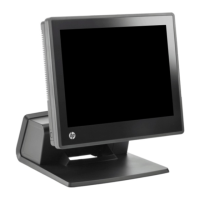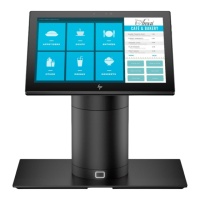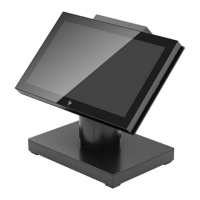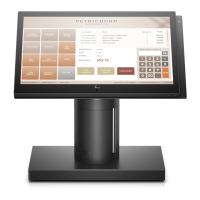Data
Communications
have
NOT previously saved a
data
comm
menu,
then
the
When you
have
set
all
the
fields to
the
desired values, you
may
then
save
them
in
non-volatile memory
using
the
"SAVE
CONFIG"
(D)
function key. Note
that
when
you
do this,
the
particular
data
comm configuration
takes
ef-
fect
immediately
for whichever
port
is
attached
to
it
(the
port
is
reinitialized).
FULL
DUPLEX
HARDW
I
RED
menu
(with
its
default
values) (
resides
in
non-volatile memory by default. _
While a
data
comm configuration
menu
is displayed on
the
screen,
the
g,
g,
_,
a,and"
function keys
have
the
effects described
in
table
7-5.
At
any
given time,
there
is
only one
portI
and
one port2
configuration
menu
stored
in
non-volatile memory.
If
you
g
DEFAULT
VALUES
..
POWER
ON
VALUES
-
NEXT
CONFIG
a
DISPLAY
FUNCTNS
..
Config
KeY9
Table 7-5.
PortI
and
Port2
Configuration
Function
Keys
Pressing this key causes all fields in
the
menu on the screen to be filled
with
their
default
values.
Pressing this key causes all fields
in
the menu on the screen
to
be filled
with
the
values that are
currently stored in non-volatile memory.
If a data comm menu
other
than
the
one displayed on the
screen is saved in non-volatile memory,
then
pressing this key will cause the menu from non-
volatile memory to appear on the screen. Note that
if
you have
not
yet saved a data comm
configuration
in non-volatile memory, pressing this key causes the
FULL
DUPLEX HARDWI
RED
menu
(with
its
default field values)
to
appear on the screen.
Pressing this key causes the next data
comm
configuration
menu (with its
default
field values)
to
be
displayed on
the
screen.
Pressing this key alternately enables and disables display
functions
mode. When enabled, an
asterisk appears in the key label. You use display
functions
mode
for
entering ASCII
control
characters in
the
Xmi
tSOD,
RecvSOD,
Xmi
tEDD,
and
RecvEOD
fields. Note
that
this
implementation
of
display
functions
mode is separate from
that
which is enabled/disabled via the mode selection
keys. Enabling or disabling display
functions
mode using this
function
key does NOT alter the
effect
of
the
"DISPLAY
FUNCTNS" mode selection key (and vice versa) .
Pressing this key removes
the
menu from the screen (WITHOUT activating
it
or
saving
it
in
non-volatile memory) and returns
the
function
key labels to the
following:
D
..
..
port
1
config
g
port2
config
g
terminal
config
-
a
POINT-TO-POINT
PROGRAMMING INFORMATION
Character Mode
This topic discusses
programming
information
of
interest
to someone who is
writing
a
data
communications
driver
or
controller
program
to communicate
with
an
HP
2624A
terminal
in
an
asynchronous point-to-point
environment.
An
asynchronous
point-to-point
data
communications
environment
is characterized
by
a flow of
characters
that
have
been produced over
random
time
intervals.
In
order to
achieve
hardware
synchronization,
each
character
is
delimited by a
"start
bit"
and
one
or
more "stop bits".
7-12
When
the
terminal
is configured for
character
mode opera-
tion
(BL'(]CK
MODE
disabled),
the
terminal
sends
char-
acters
to
the
host computer as
they
are
entered
through
the
keyboard.
This
mode of
operation
can
be
used
for
in-
teractive
or
conversational exchanges
between
the
ter-
minal
operator
and
an
application program.
Multicharacter Transfers
When
the
terminal
is configured for block mode
operation
(BLOCK
MODE
enabled),
data
entered
through
the
keyboard is
(
(
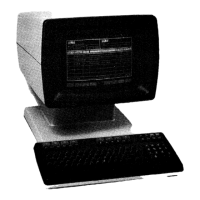
